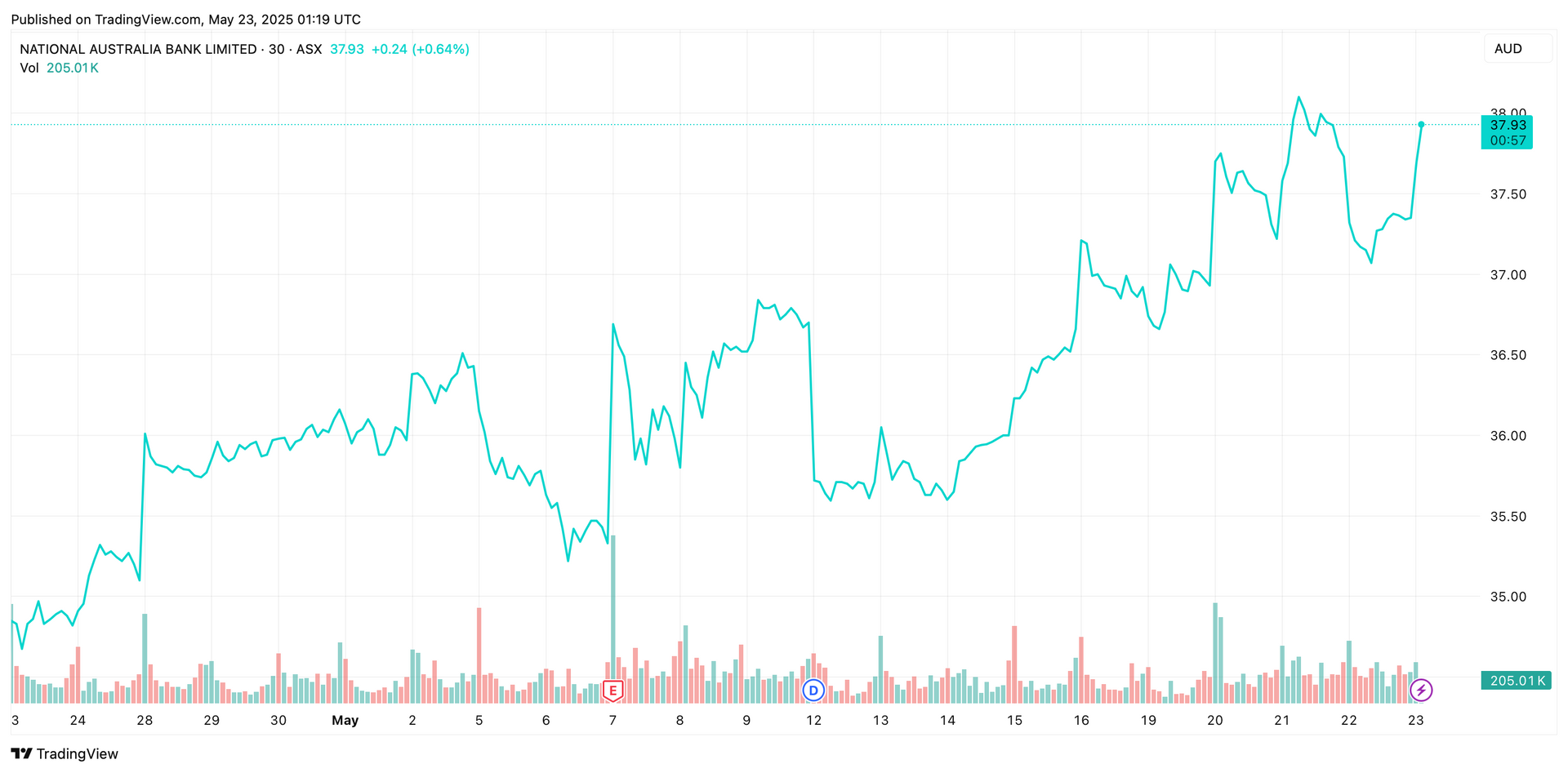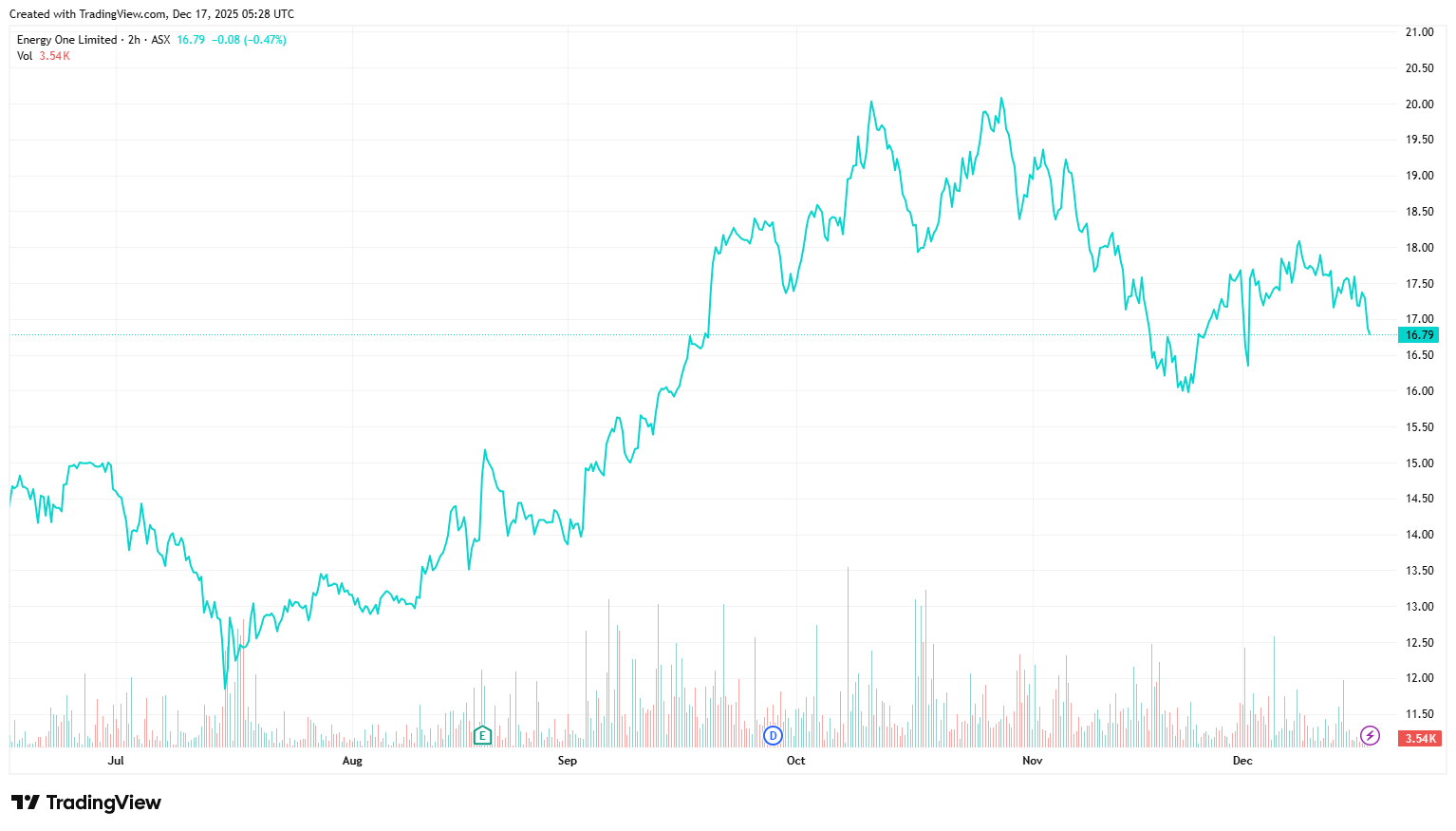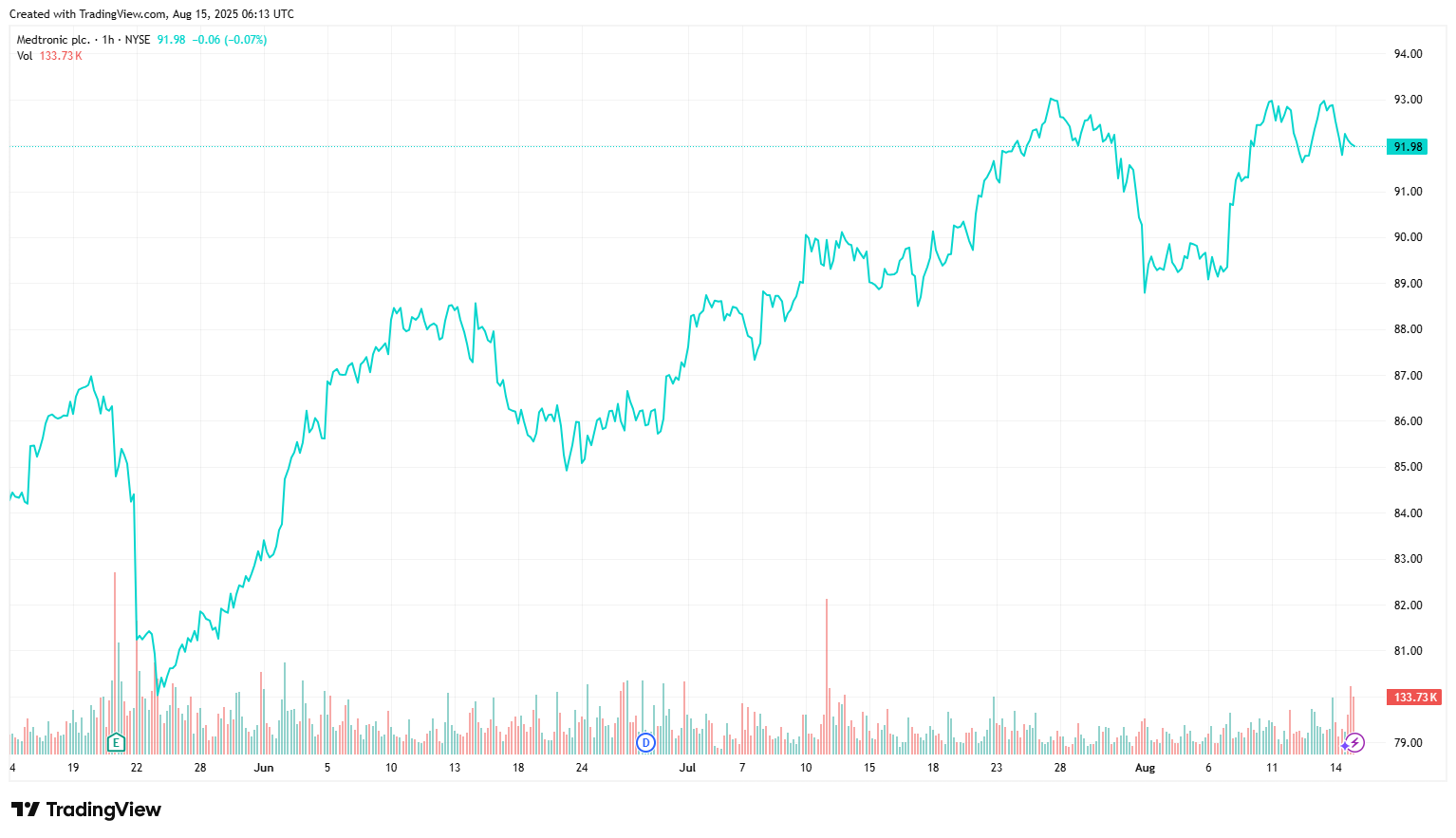Stock Spotlight: National Australia Bank Limited (ASX:NAB)
National Australia Bank Limited (NAB) is one of Australia’s largest institutions, and an integral part of Australia’s financial system. As a full-service bank, NAB offers a diverse array of financial services to retail, commercial and institutional markets across Australia and New Zealand. NAB is one of the ‘Big Four’ players in Australia’s resilient banking sector, and is currently the country's third-largest mortgage lender.
NAB stocks are seen as a stable, blue-chip investment, and ASX: NAB is one of the ASX’s top 10 stocks by market capitalisation. NAB’s ongoing financial stability, growth prospects and reliable dividend payouts ensure NAB shares are considered a core holding for income-focused and long-term investors.
About National Australia Bank Limited
NAB was formed in the early 1980s, when the National Bank of Australasia (established 1858) merged with the Commercial Banking Company of Sydney (established. 1834). Over the years, NAB expanded through various acquisitions and international ventures, and has recently refocused on its core markets in Australia and New Zealand. Notable recent acquisitions include the digital bank 86 400 Neobank in 2021, which was incorporated into NAB’s uBank online bank, and the Australian consumer arm of Citibank in 2022.
Currently, NAB stands as one of Australia's ‘Big Four’ banks, and aims to be the ‘most customer-centric company in Australia and New Zealand’. Operations span three core segments:
Retail banking - offering home loans, personal finance, and everyday banking.
Business banking - providing lending, deposits, equipment finance, and advisory services to small-to-medium enterprises (SMEs), corporate clients and agribusinesses.
Institutional banking - providing large-scale clients with transaction banking, capital markets access, and risk management solutions.
As one of Australia’s largest banks, NAB plays a central role in the financial system. It is Australia's third-largest mortgage lender, a leading financial service provider to SMEs markets, and contributes to economic development through infrastructure financing and sustainability-linked loans.
What Makes NAB Stocks A Strong Competitor In The Australian Banking Sector?
National Australia Bank (NAB) has around 10 million customers, and is the largest lender to businesses in Australia. By market capitalisation, ASX: NAB is the second largest bank on the ASX—behind the Commonwealth Bank (CBA)—and is among the ASX’s top 10 listed companies.
Financially, NAB holds a solid position, underpinned by the resilience of the Australian banking sector and the diversity of its offerings. While revenues and net profits have been impacted by strong sector competition and a challenging interest-rate environment, NAB prospects remain promising. Future growth is expected to be driven by continued expansion in business banking, enhanced digital banking capabilities, and Australia’s broader economic growth.
NAB shares are buoyed by the bank’s robust capital position, with a higher-than-benchmark Common Equity Tier 1 (CET1) ratio, along with a NAB dividend yield that has been consistent and competitive.
Key Stats
Key Stats
Source: Yahoo Finance, ASX. Data as of 23/05/25.
Price Performance

Growth Potential
NAB’s growth strategy is to expand its customer numbers and its service blueprint by offering a superior customer experience. To deliver this, it holds a three-pronged approach:
- Being relationship led, offering excellent service, value, and personalisation;
- Exceptional experiences, with simple, fast, and easy interactions;
- Safe and sustainable banking, with a strong balance sheet, proactive risk management and secure technology.
NAB is investing heavily in digital transformation to improve and personalise customer experiences. It is also migrating the bulk of applications to cloud-based infrastructure, to streamline how data is used and provide a better user experience.
Technology, internal education and governance also underpin a focus on system safety and resilience, with the use of AI tools, regular Board oversight, independent expert panels, and training on emerging risks like cyber threats.
We see growth potential due to the following reasons:
- Trading largely in line with our valuation and offers a reasonable fully franked dividend yield.
- Relative valuation to peers looks attractive.
- Strong oligopoly position in Australia (along with three other major banks in CBA, ANZ, WBC).
- SME market focus provides some differentiation to other major banks.
- Well capitalised with a strong capital position which provides optionality of further capital management (e.g. share buybacks).
- NAB could be the best placed among peers to RBA interest rate cuts - the impact of a 25bps RBA cash rate cut on Australian unhedged low-rate sensitive deposits is estimated at approx. 1bps (annualised).
- Solid provisioning coverage.
- A well-diversified loan book with attractive exposure to business.
Upcoming Innovations From National Australia Bank Limited (NAB)
NAB has embraced generative AI, recently developing its 'Customer Brain', which analyses data to anticipate customer needs and provide tailored interactions on a large scale. In 2024, the Customer Brain drove 250 million customer interactions.
New platforms have also been introduced to add value for business and institutional clients. NAB Bookkeeper helps SMEs streamline financial management, while new CRM systems assist corporate and institutional clients in their own customer interactions.
Another key focus is on adapting to the evolving financial services landscape, with initiatives in sustainability, green financing and human rights issues. The bank offers ESG-linked derivatives, and has dedicated community investment and charitable programs supporting climate action, affordable housing, and First Nations economic advancement. In 2024, NAB also introduced a Human Rights Due Diligence process as part of its risk assessment process.
NAB Shareholder Returns & Investor Sentiment
NAB has maintained stable and relatively high dividend payouts, reflecting the bank’s commitment to returning value to shareholders,
The NAB share price on the ASX has grown steadily over recent years, supported by heavy institutional investing (over 60% of stocks are held by institutional investors) and the perception of ‘Big Four’ banks being a solid investment for long-term growth.
The ASX:NAB price is impacted by NAB earning reports and interest rate fluctuations. It is also swayed by market trends, global trade and broader economic conditions. However, even within a climate of uncertainty, ASX: NAB will likely remain a popular choice for investors seeking reliable income and potential long-term gains.
Investment Tips For Buying National Australia Bank Limited (ASX: NAB) Stocks
When assessing NAB shares, investors should focus on metrics beyond the price of NAB shares today. Strong, consistent results in metrics such as the return on equity (ROE), cost-to-Income ratio and loan impairment/provisioning can indicate effective management and earnings stability. Earnings per share (EPS), the price-to-earnings (P/E) ratio and dividend yield should also be reviewed, when considering whether ASX: NAB stocks align with an individual’s investment goals.
The performance of Australia’s ‘Big Four’ bank stocks—including NAB stocks— is closely tied to interest rates, inflation, employment levels, and broader economic conditions. On the whole, these stocks are generally seen as offering consistent rather than rapid growth, along with potentially attractive dividends. These can be useful within an investment portfolio as a balance against higher risk stocks (such as tech, mining or emerging industry stocks).
While NAB ASX stocks often attract buy-and-hold investors, their high volume of trade means that they are generally quite liquid, which may make them viable for consideration by short term traders.
Key Risks
- Declining interest rates may reduce bank profitability by compressing the gap between lending and deposit rates.
- NAB faces significant competition in its core market of retail and commercial banking in Australia and New Zealand.
- NAB’s significant involvement in the Australian housing sector exposes it to risks tied to fluctuations in property prices.
- Volatility in the economic climate, global trade and consumer confidence can impact bank revenues and profitability.
- Weaker credit quality
- Increasing competition within the higher margin SME market.
- Low growth environment impacting earnings.
- Potential cuts or reduction to dividends due to low earnings growth.
- Intense competition for loan and deposit growth.
- Normalising / increase in bad and doubtful debts or increase in provisioning.
- Funding pressure for deposits and wholesale funding (increased funding costs).
NAB’s Risk Management & Financial Stability
NAB has adopted a comprehensive Risk Management Framework to ensure resilience amid economic fluctuations and regulatory changes. The framework actively addresses strategic, credit, market, liquidity, operational, compliance, conduct, and sustainability related risks, to ensure ongoing financial stability.
NAB’s Risk Appetite Statement and Risk Management Strategy are approved by the Board and submitted to APRA. These sets boundaries for acceptable risk-taking aligned with the bank’s strategic goals. In its operations, NAB’s ‘Three Lines of Accountability’ model provides oversight in the response to emerging risks.
The consideration of environmental, social and governance (ESG) risks -including climate change and human rights issues -is also embedded in NAB’s risk processes, reinforcing its commitment to responsible banking and long-term financial stability.
This multi-layered approach to managing credit, market and operational risk serves to ensure ongoing financial stability.
Frequently Asked Questions.
How has the NAB share price historically responded to changes in interest rates & economic cycles?
The ASX:NAB price tends to rise during periods of economic growth. Higher interest rates can also bump up share prices, though the increased profitability of higher lending margins may be somewhat offset by less loans being taken out, and an increased risk of loan default.
What factors influence fluctuations in NAB share prices & how can investors predict future price trends?
The NAB share price on the ASX is driven by interest rate movements, earnings results, regulatory developments, and broader market sentiment. Investors often look to macroeconomic indicators and NAB’s financial performance to anticipate trends.
How can investors assess the long-term growth potential of NAB, especially in a competitive banking market?
Investors can evaluate NAB’s investment in technology, its growth initiatives, diversification strategies and market share, while comparing these against peers in the Australian and New Zealand banking sector.
How have mergers, acquisitions, or strategic partnerships impacted NAB’s stock price & business operations?
When aligned with growth goals, strategic deals have historically boosted investor confidence. However, they can trigger short-term volatility depending on execution risk and market perception.
What role does NAB play in promoting sustainability & how could this affect future stock performance?
As sustainability becomes more central to market valuation, NAB’s commitments to ESG goals and green finance will enhance its brand and attract responsible investors, supporting long-term performance of NAB stocks.
What are the key indicators investors should watch for when deciding to buy or sell NAB shares?
Investors can monitor earnings growth, dividend yield, return on equity, earnings per share, rice/earnings ratios, capital adequacy, interest rate trends and macroeconomic forecasts to make informed buy or sell decisions.
Subscribe to our newsletter
Disclaimer: This article does not constitute financial advice nor a recommendation to invest in the securities listed. The information presented is intended to be of a factual nature only. Past performance is not a reliable indicator of future performance. As always, do your own research and consider seeking financial, legal and taxation advice before investing.











